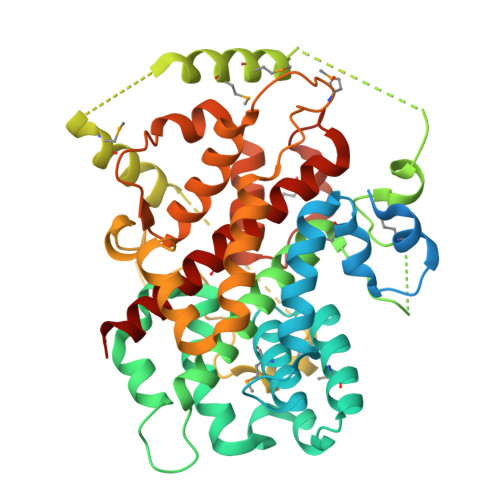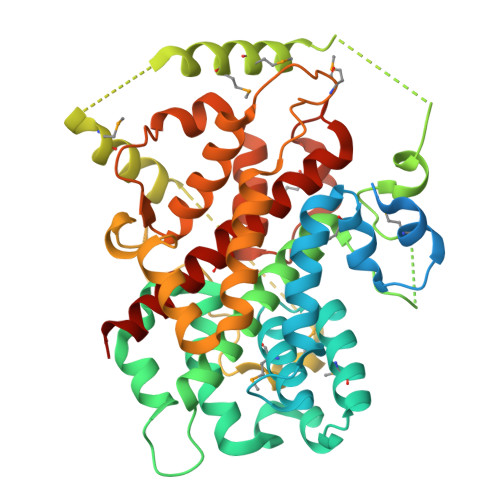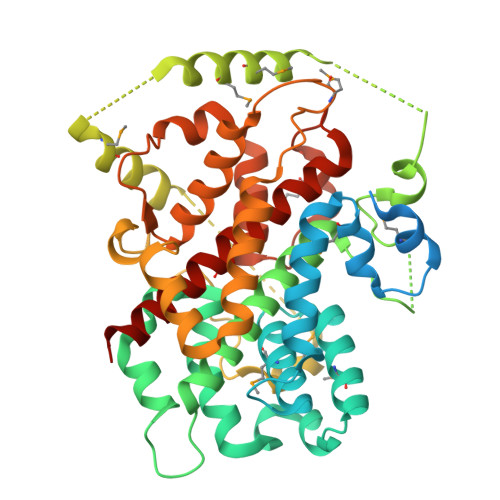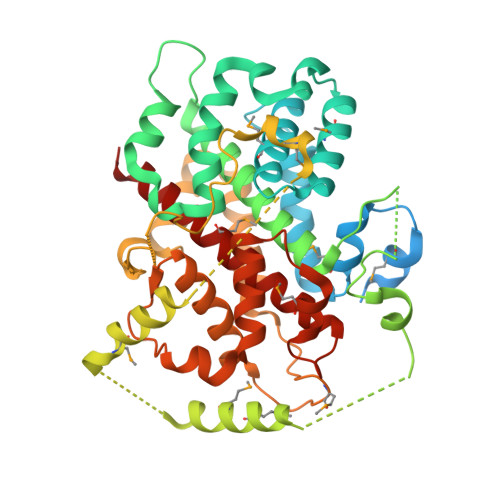Janus-faced Sestrin2 controls ROS and mTOR signalling through two separate functional domains.
Kim, H., An, S., Ro, S.H., Teixeira, F., Jin Park, G., Kim, C., Cho, C.S., Kim, J.S., Jakob, U., Hee Lee, J., Cho, U.S.(2015) Nat Commun 6: 10025-10025
- PubMed: 26612684
- DOI: https://doi.org/10.1038/ncomms10025
- Primary Citation of Related Structures:
5CUF - PubMed Abstract:
Sestrins are stress-inducible metabolic regulators with two seemingly unrelated but physiologically important functions: reduction of reactive oxygen species (ROS) and inhibition of the mechanistic target of rapamycin complex 1 (mTORC1). How Sestrins fulfil this dual role has remained elusive so far. Here we report the crystal structure of human Sestrin2 (hSesn2), and show that hSesn2 is twofold pseudo-symmetric with two globular subdomains, which are structurally similar but functionally distinct from each other. While the N-terminal domain (Sesn-A) reduces alkylhydroperoxide radicals through its helix-turn-helix oxidoreductase motif, the C-terminal domain (Sesn-C) modified this motif to accommodate physical interaction with GATOR2 and subsequent inhibition of mTORC1. These findings clarify the molecular mechanism of how Sestrins can attenuate degenerative processes such as aging and diabetes by acting as a simultaneous inhibitor of ROS accumulation and mTORC1 activation.
Organizational Affiliation:
Department of Biological Chemistry, University of Michigan, Ann Arbor, Michigan 48109, USA.





















